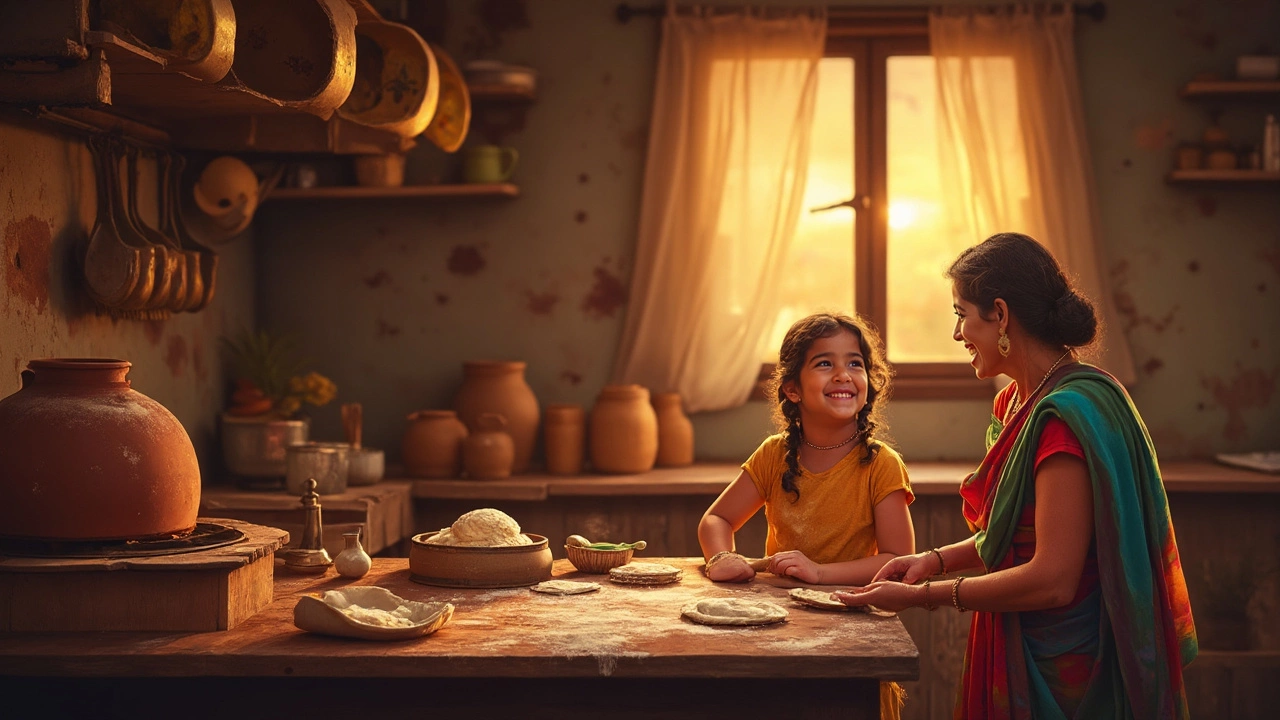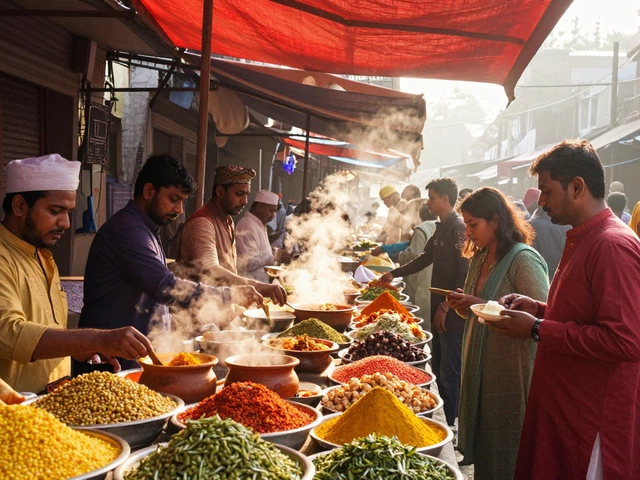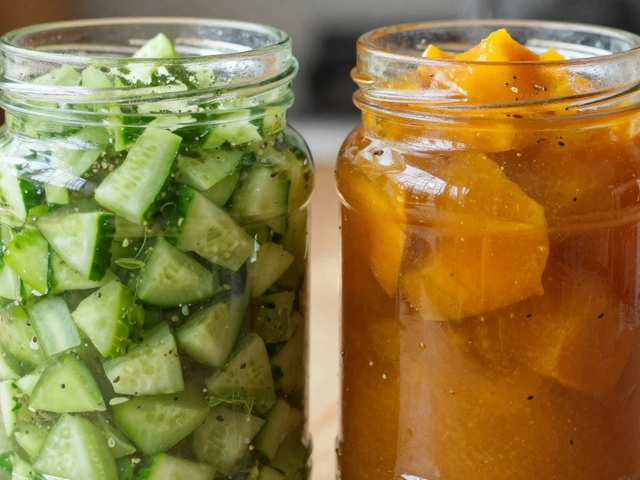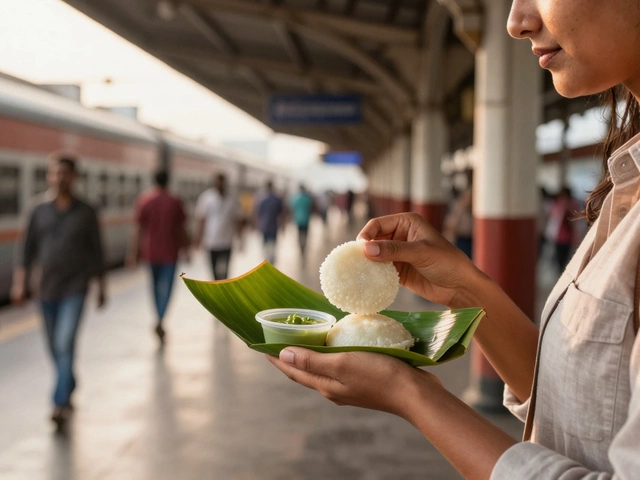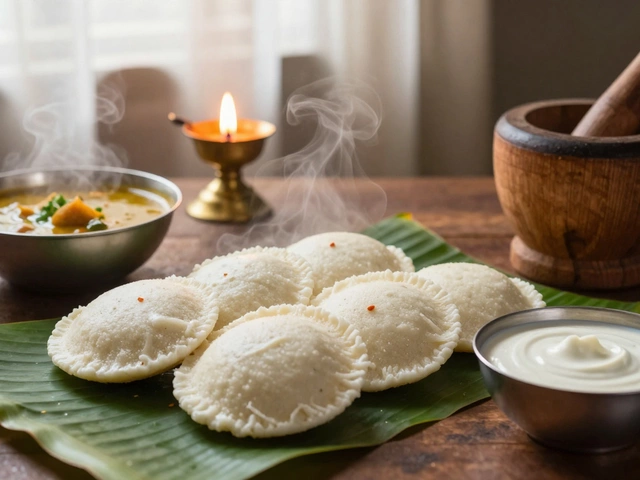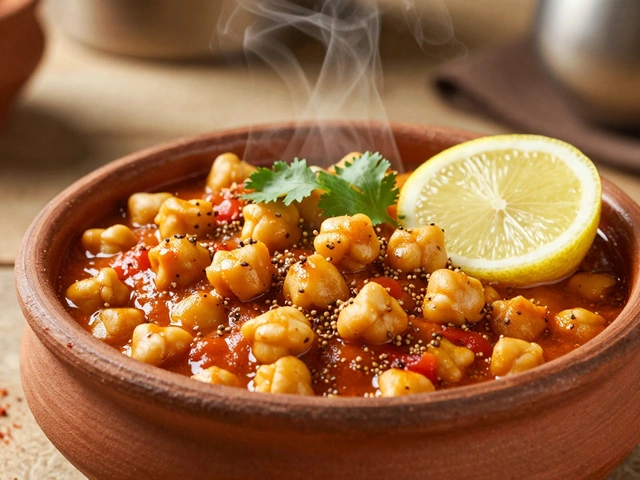If you’ve ever stared at an Indian restaurant menu and wondered if you should get naan or roti, you’re not alone. These breads sit at the heart of Indian meals, but they’re not twins—they each bring something different to the plate. Knowing the right one to eat (or make!) can really up your dinner game.
Let’s get straight to it. Naan is that soft, pillowy bread, often with a slight chew and sometimes even stuffed or sprinkled with garlic. Roti is the humble, everyday flatbread—plain but dependable, perfect for scooping up curries without stealing the show. If you’re worried about getting your roti puffy or your naan tender, it’s not as complicated as you might think. A few key tips and the right ingredients make all the difference.
- The Main Ingredients Showdown
- How They're Made: Cooking Techniques Explained
- Texture, Taste, and When to Choose Which
- Nutrition and Health: What to Expect
- Top Tips for Making Perfect Roti and Naan
The Main Ingredients Showdown
Let’s get real about what actually goes into making naan and roti. These two breads may look similar at a glance, but their ingredient lists set them far apart in how they taste and feel.
Here's a breakdown of the typical base ingredients:
| Bread | Main Flour | Leavening | Dairy | Oil/Fat |
|---|---|---|---|---|
| Naan | All-purpose (maida) or sometimes wheat flour | Yes (yeast or baking powder) | Yogurt, sometimes milk | Usually ghee or butter |
| Roti | Whole wheat flour (atta) | No (usually unleavened) | None | Little or none, sometimes a dab of ghee after cooking |
Naan’s richness comes from three things: white flour, dairy (like yogurt or milk), and a little yeast or baking powder. That’s why naan gets so fluffy and soft. If you add an egg, which some recipes do, your naan comes out even more tender.
Roti keeps things simpler—just whole wheat flour and water. No yeast, no baking powder, no fuss. Sometimes a splash of oil goes in the dough, but it’s not a must-have. That’s what makes roti a daily staple at home across India. Less rich, but perfect for scooping up spicy curries.
If you ever spot a bread with sesame seeds or chopped garlic on top, nine times out of ten, that’s a naan. Roti stays plain and simple, blank canvas style, unless you get creative.
So, next time you’re holding both in your hands, you can tell the difference before you even taste.
How They're Made: Cooking Techniques Explained
If you peeked into an Indian kitchen, you’d spot that naan and roti never get cooked the same way. Roti is usually made from whole wheat flour, water, and nothing else. The dough comes together quickly—no yeast or rising time needed. Once the dough is shaped into thin discs, it gets slapped straight onto a hot, flat pan known as a tawa. The heat puffs up the roti and cooks it in less than a minute per side. Some folks finish it directly over a flame for that signature char and puffed-up look. The results? A light, soft bread perfect for soaking up curry.
Naan, on the other hand, takes a little more patience. The dough usually contains white flour, yogurt, ghee or oil, and yeast or baking powder to help it rise. After mixing and kneading the dough, you have to let it rest and proof—this is what gives naan its chewy, airy texture. Naan gets slapped onto the hot walls of a tandoor oven, where the intense heat (sometimes up to 900°F or 480°C) blasts it, giving those iconic blisters and smoky flavor. Most of us don’t have a tandoor at home, but you can get pretty close with a hot cast iron skillet or even your oven on broil.
Let’s sum it up with a quick comparison:
| Bread | Main Flour | Leavened? | Traditional Cooking Method | Approx. Cook Time |
|---|---|---|---|---|
| Roti | Whole Wheat | No | Tawa (flat skillet) or open flame | 1-2 mins |
| Naan | White (All-purpose) | Yes | Tandoor (clay oven) | 2-4 mins (plus proofing) |
Roti’s all about speed and simplicity. Naan takes more time, but that rise and smoky taste can be worth the wait. If you’re just starting, give roti a go—it’s nearly foolproof and perfect for daily eating. Ready to step up? Try naan for a show-stopping bread that’s a little more special.
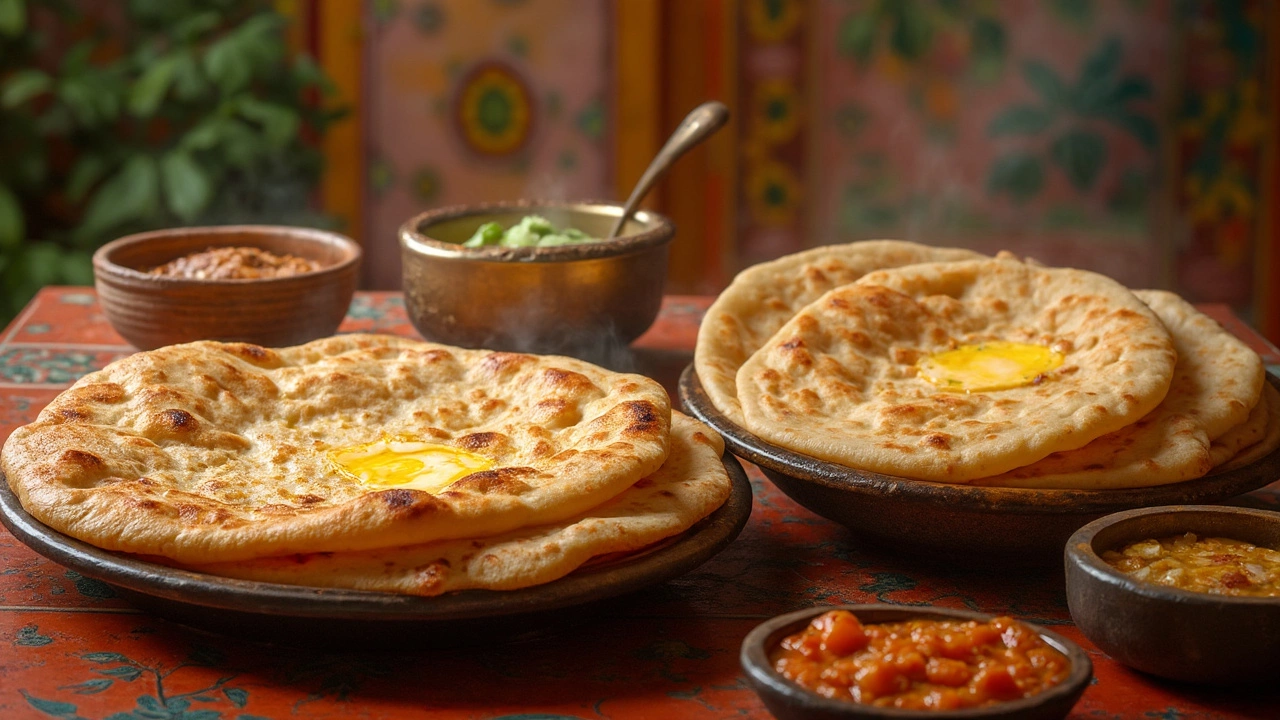
Texture, Taste, and When to Choose Which
If you’ve ever pulled a piece of naan, you’ll notice that chewy bite and a soft, slightly charred crust. That comes from baking it in a really hot tandoor oven, often brushed with butter or ghee right at the end. Naan is usually a bit thicker than roti and feels richer, which is no surprise when you see the ingredients—yogurt, sometimes milk, and sometimes even a dash of sugar go into the dough.
Roti, on the other hand, is all about simplicity. It’s thin, made with whole wheat flour and water (sometimes a touch of oil), and cooked on a flat pan or skillet. It doesn’t have that fluff or char but is soft and pliable—built for dipping and wrapping. Unlike naan—which can feel heavy with creamy dishes—roti stays light. And here’s the kicker: roti’s whole wheat base means more fiber, less fat, and a subtle nutty taste.
Making a choice? Try this:
- Going for curries with lots of sauce (think butter chicken or paneer makhani)? Naan scoops it up without falling apart.
- Eating something simple or watching your calorie intake? Roti keeps things light and pairs with almost anything.
- If you want to show off, pull out naan for a dinner party. It looks great on a plate, especially with toppings like garlic or sesame.
- Roti is your everyday hero—quick to make, good with veggies, dals, or just a bit of pickle.
If you like numbers, check this out:
| Bread | Common Serving Size | Calories | Protein | Fat | Fiber |
|---|---|---|---|---|---|
| Naan | 1 piece (about 80g) | 260 | 7g | 7g | 2g |
| Roti | 1 piece (about 40g) | 120 | 3g | 0.5g | 3g |
So the bottom line: naan gives you a soft, indulgent bite perfect for rich dishes, while roti is lighter and shines when you're after something wholesome or just want to keep things classic.
Nutrition and Health: What to Expect
If you’re watching what you eat, picking between naan and roti matters more than you might think. Let’s break it down. Most traditional roti is made with whole wheat flour, water, and maybe a touch of salt. There’s no oil, no yogurt, and definitely no butter unless you slap some on the hot bread (totally up to you). That means roti is usually lower in calories and fat than naan.
Naan, on the other hand, starts out a little richer. It typically includes refined white flour (maida), yogurt, and sometimes even milk or ghee. Some restaurant versions get finished with butter or garlic oil, ramping up the taste—and the calorie count. If you're at home, you can tweak the recipe a bit, but the basics always mean more fat and a bit more sugar than you’ll find in roti.
- Roti usually gives you more fiber because whole wheat flour is the star.
- Naan is softer and has a higher glycemic index, thanks to that white flour.
- If you’re looking out for protein, both breads have some, but naan can have just a little more due to the dairy ingredients.
- For anyone keeping an eye on sodium, pre-made naan can sometimes have sneaky amounts of salt added, so always check the label if you’re buying it from the store.
- Both breads can be vegan, but most naan recipes aren’t unless you swap the dairy for plant-based alternatives.
One big tip: naan and roti both soak up curries like champs, but if you’re aiming for a lighter meal or eating daily, roti is the usual go-to in Indian homes. Save naan for a treat or parties—it’s worth it just for that texture. If you want to make your roti even healthier, try adding a bit of millet or chickpea flour into your dough. That boosts protein and makes your bread a bit more filling. Easy swap, big win.
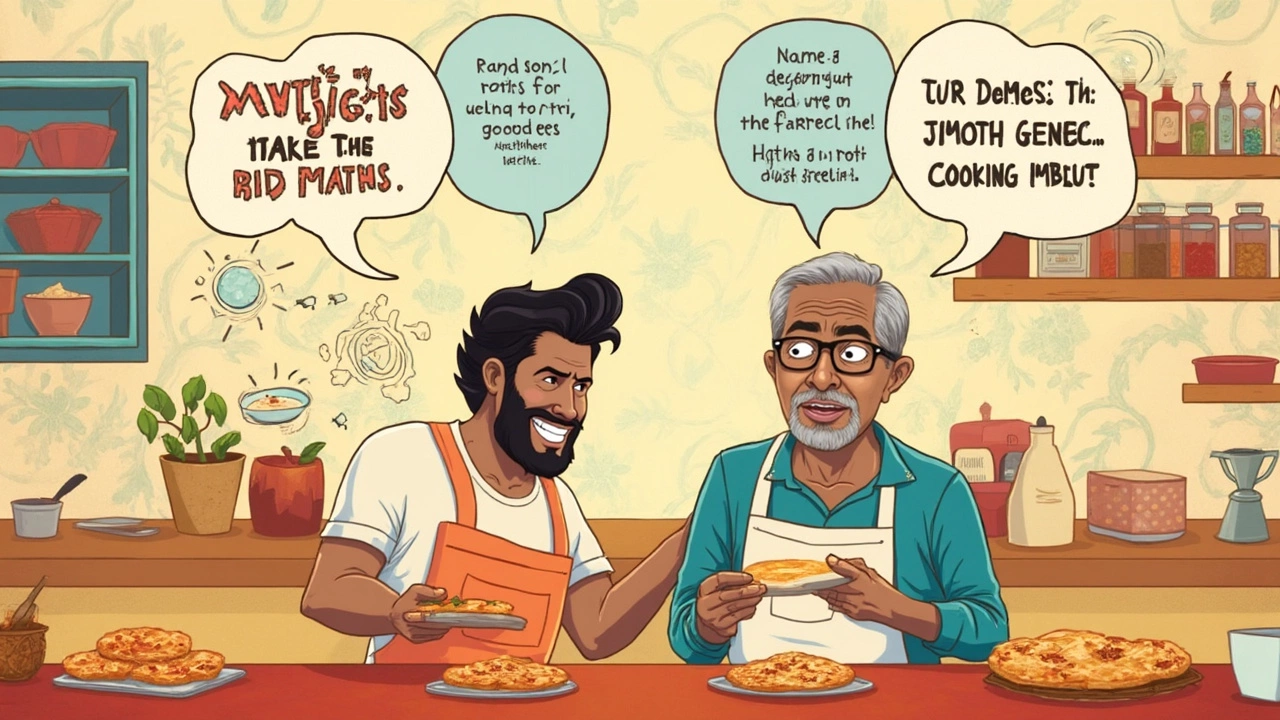
Top Tips for Making Perfect Roti and Naan
Let’s cut to the chase—nailing these breads at home isn’t magic, but it does help to know a few tried-and-true tricks. Whether you want your roti soft and puffed or your naan tender and chewy, here’s what actually works.
- Naan really comes alive with yeast. Don’t skip it! A tiny pinch helps give you that airy texture. Some people swap in a bit of baking powder if they’re rushed. Both methods boost those signature bubbles.
- Milk and yogurt give naan its soft bite and a slight tang. If you make it with just water, it turns out flat and missing that classic chew. Full-fat yogurt especially is key for richness.
- When it comes to roti, skip the fancy flour. Traditional roti uses stoneground atta flour (whole wheat)—makes all the difference compared to all-purpose flour. If you can’t find atta, try a finely milled whole wheat flour as a close second.
- Don’t overdo the water for roti dough. It should be soft but not sticky. If you knead for about 8 minutes and let it rest for 20-30 minutes, you’ll get easier-to-roll, softer roti.
- Get your pan hot! For naan, a screaming-hot oven or tandoor is traditional, but at home, a cast iron skillet or heavy pan on high heat works. For roti, that quick, high heat helps it puff and cook through without drying out.
- If your naan seems dry, brush with melted butter—or go classic with ghee. Same goes for roti right after it comes off the pan. This keeps the bread flexible and flavorful.
- Don’t crowd the pan. Giving each bread room lets it cook evenly, helping both naan and roti get those golden spots without steaming.
And here’s a fun fact: Punjabi grandmothers often test roti dough by pressing it—if it springs back just a little, it’s got the right amount of softness. Small details like that take regular home bread up a notch.
